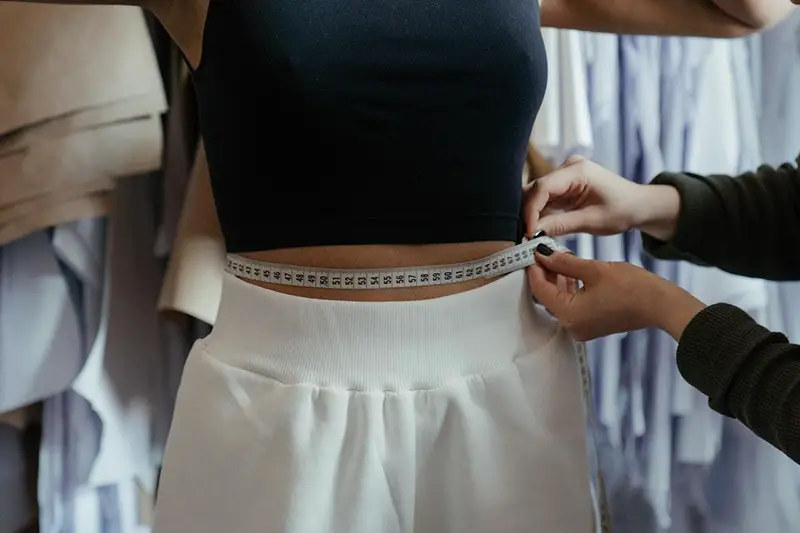Click here to get this post in PDF
The fashion industry has a rich history with an expansive mélange of nuanced terminology that sometimes may confuse even the most ardent fashion aficionados. One such point of confusion is the distinction among the different approaches to garment production whose terms are conflated in usage in today’s saturated landscape of fashion brands to a point where some of them are losing their meanings.
This article, therefore, is an attempt to present a clear-cut definition of each term and elaborate on the concepts that make each one of them unique.
A Brief History
For the overwhelming majority of human history, the methods whereby clothing was produced had roughly stayed the same. For the common people, clothing was mostly made at home by the family and was aesthetically very regional as it was common at the time for women to possess basic traditional dressmaking skills passed down by generation. On the other hand, while the wealthy and nobility had access to styles from other regions mainly due to their better access to trade, the merchants would rarely trade finished clothes, but rather, textiles and fabrics. It was the job of seamstresses (or seamsters) and tailors, skilled or otherwise, to make custom clothes.
As time moved forward, garments started to become more form-fitting. Sewing techniques evolved; outfits became more elaborate yet somewhat more affordable to be enjoyed by more people. Fashion dolls were introduced to disseminate trends to the public, and accessories such as gloves, hats, and stockings were popularized. However, clothes were still made-to-order for all, and while the industry was starting to take hold in the late 18th century, the capacity for mass production was still lacking until ready-to-wear uniforms were manufactured for the US military in 1812, after which ready-to-wear garments soon started to become more widely available thanks to the introduction of tape measures which made standardization possible and later printed images and sewing machines which sped up the circulation of trends and production of garments respectively.
Haute Couture
Haute couture is a French term that can roughly be translated to high-end sewing or dressmaking and has evolved to sit at the top of the hierarchy in today’s world of fashion. In a sense, haute couture is a very time-consuming traditional and artisanal way of making clothing with top-tier quality craftsmanship for one specific customer.
However, what makes haute couture distinct from bespoke tailoring is its exclusive nature. In France, haute couture is an official title—protected by the law—that is accredited to the fashion houses that meet strict and specific rigorous qualification requirements such as showcasing 50 pieces of design twice a year for both day and evening garments. The title is conferred by an association called Fédération de la Haute Couture et de la Mode which is the French fashion industry’s governing body. A select few famous high fashion brands such as Dior, Chanel, and Givenchy constitute haute couture members.
Ready-to-Wear
Ready-to-wear or off-the-rack clothing (Prêt-à-Porter) refers to high-grade and couture-tier garments in finished conditions that are produced to standard sizes using simplified haute couture techniques and modern manufacturing methods to make haute couture more accessible and less expensive. While a very small number of people can afford to purchase haute couture, ready-to-wear can be enjoyed by a larger audience.
However, ready-to-wear garments should not be confused with mass-produced high street clothes that can be bought in an average shop in town. Ready-to-wear collections are produced by some haute couture brands such as живанши and other well-established designer brands that are usually fashion-forward and follow certain design philosophies as well as limited in batch size and top-tier in quality. These collections are generally showcased during major fashion weeks.
It should also be noted that the term “ready-to-wear” is sometimes used in contrast to bespoke and made-to-measure as a concept or method of producing apparel that can include mass-produced ready-made garments.
Bespoke and Made-to-Measure
Perhaps the greatest confusion, however, is around the use of bespoke and made-to-measure (or MTM) terms. To put it simply, the difference between these two methods is the extent to which the garment is customized to suit the customer. In MTM, a customer chooses from a pre-selected range of models with standard patterns. The garment then is modified to take into account the customer’s specific measurements and minor to moderate design and customization preferences that include things such as the fabric, buttons, cuffs and pocket style, etc. Made-to-measure garments often require no fitting sessions after the initial measurements as models are pre-defined and patterns are standard. Generally, the options in customization are very limited but the process is very efficient.
On the other hand, bespoke tailoring is the process of making a piece of clothing from the ground up exactly based on the customer’s requirements which encompasses everything from the model to the measures, materials, and everything in between. With bespoke tailoring, there are no limitations on the design as new patterns are created, but it takes more time for the garment to be tailored and it may take multiple fitting sessions.
You may also like: What Can Entrepreneurs Learn From The Fashion Industry?
Image source: Pexels.com

